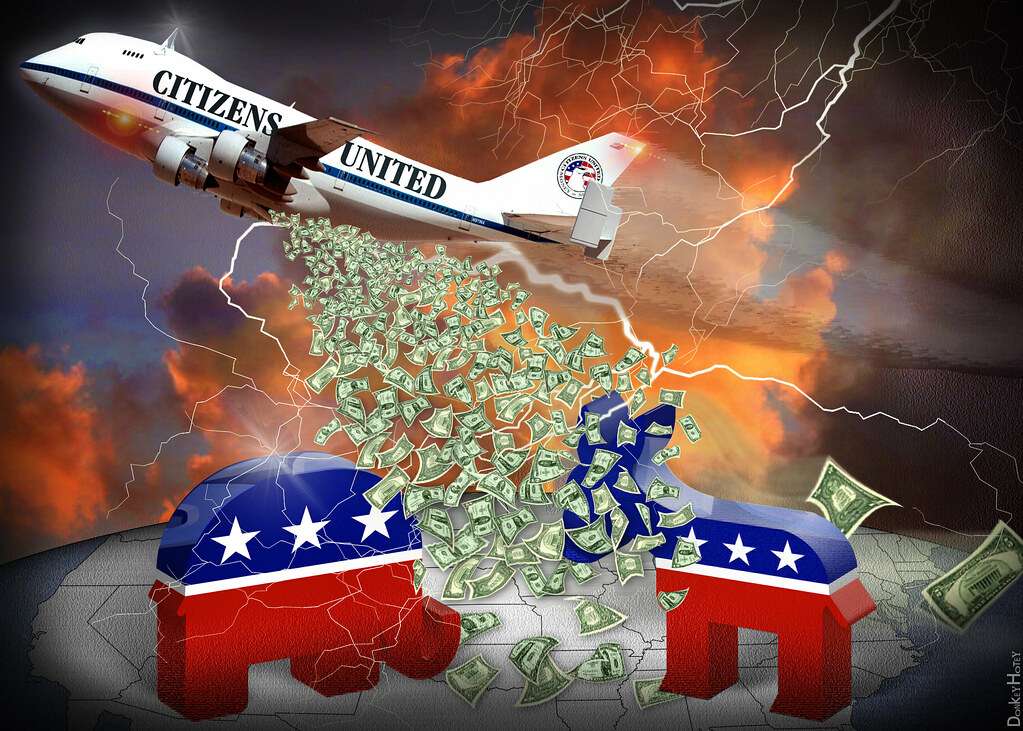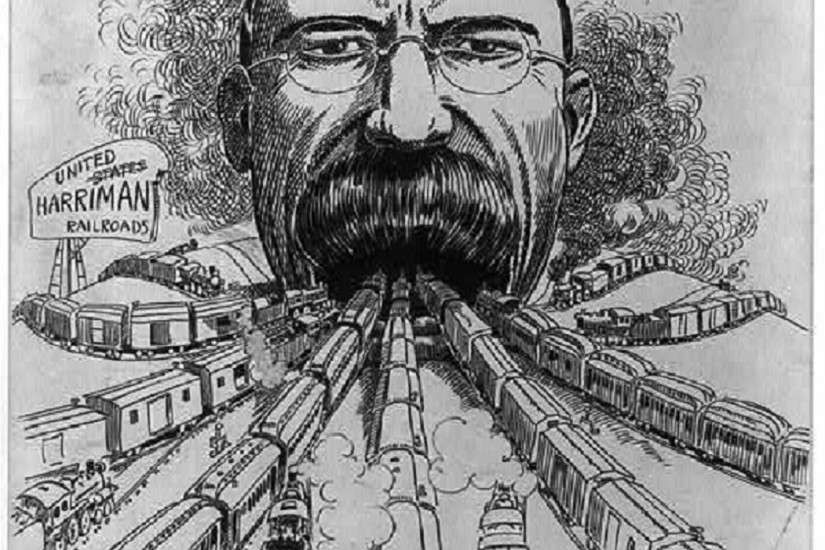The Lie That Sold Out the Working Class
All of our lives we’ve been told that our vote is our voice. That the two-party system is democracy in action. That we live in a country where leadership is chosen by the people and for the people.
But that’s not what reality shows us.
From backroom deals to bipartisan corporate bailouts, it’s clear that both major parties—yes, friends, Democrats (Neoliberals) and Republicans—have helped build and protect a political system that serves wealth over workers. While one party wages open war on civil liberties, the other offers symbolic gestures and quiet compliance. The billionaires win either way.
It isn’t gridlock that got us here. And it sure wasn’t democracy. It was a machine maticulously built to maintain corporate control while selling out the working class. And it was done by legal precedent, dark money, and by the deliberate choices of those in power.
To understand how we got here, we first have to start with the lie that opened the door.
The Illusion of Choice
Let’s start with the uncomfortable truth: The two-party system in America isn’t broken—it’s functioning exactly as it was designed to.
We’re told we have a choice. Left or right. Democrat or Republican. But when it comes to the issues that shape our lives—corporate power, living wages, affordable housing, endless war, and access to healthcare—both parties too often land on the same side: protecting profits over people.
This is how corporate influence in American politics thrives: One party pushes blatant authoritarianism—banning books, controlling women’s and trans bodies, attacking voting rights. The other talks about progress, tweets support for marginalized groups, and then turns around to protect corporate interests and billionaires. We saw this clearly with Cory Booker—after a 25-hour, record-breaking filibuster on the Senate floor, he turned around the very next day and voted to support the bombing of women and children in Gaza.
And the worst part of all this? Many Americans see it. They feel it. They just don’t know how to stop it.
The truth is, this is not a democracy in the way we’ve been taught to believe.
It’s a carefully managed illusion—a manufactured reality maintained by corporate influence in American politics.
And unless we understand the legal and political machinery behind that illusion, we’re going to stay stuck in cycles of betrayal and disappointment.
The Legal Blueprint for Citizen United: Santa Clara County v. Southern Pacific Railroad (1886)
This is the case that really started it all. This case wasn’t about democracy. It was about railroad taxes. But what came out of it changed American politics forever.
The Supreme Court’s ruling in Santa Clara County v. Southern Pacific Railroad didn’t explicitly say that corporations are people. But it did apply the 14th Amendment’s Equal Protection Clause to a corporation, allowing it to challenge how a local government taxed railroad property. That decision meant corporations could now sue under the same constitutional protections designed to protect formerly enslaved people. While the case was technically about tax law, its implications has reshaped American politics to this day.
Some facts: Before the Court even heard arguments, Chief Justice Morrison Waite made a casual verbal statement: “The Court does not wish to hear argument on the question whether the provision in the Fourteenth Amendment to the Constitution… applies to these corporations. We are all of the opinion that it does.”
That comment was not included in the official opinion. It wasn’t part of the ruling, it wasn’t debated, and it didn’t have legal force.
But it was still written into history.
J.C. Bancroft Davis, the Court’s official reporter—and notably, a former railroad executive—chose to include that statement in the case’s headnote, a summary printed at the top of the published opinion. Headnotes are not law. They’re not binding. But because Davis’s summary implied the Court had definitively ruled that corporations are protected under the 14th Amendment, later courts began treating it as if it were actual precedent.
This one sentence—never argued in court, never ruled on, never voted into law—laid the groundwork for the idea that corporations are legal “persons” with constitutional rights, just like you and me.
That shift allowed corporate entities to claim protections meant for human beings—shielding them from regulation, accountability, and even taxation. While actual citizens were being denied housing, healthcare, and fair wages (sound familiar), corporations gained the ability to argue for their “freedom” under the law.

It didn’t just allow them to sue. It allowed them to bend the legal system around their interests.
And it started with a throwaway comment recorded by someone who used to work for the railroads.
That quiet shift in 1886 opened the gates for what would become a full-scale legal architecture of corporate power. Over the next century, the Supreme Court expanded corporate rights step by step—from granting Fourth Amendment protections in Hale v. Henkel (1906), to First Amendment speech rights in First National Bank of Boston v. Bellotti (1978).
By the time Citizens United v. FEC was decided in 2010, the foundation had already been laid. It was a 5–4 decision, led by Justice Anthony Kennedy and backed by Chief Justice Roberts and Justices Scalia, Alito, and Thomas—all conservative appointees. They handed down one of the most sweeping expansions of corporate influence in American political history.
The ruling declared that corporations and outside groups could spend unlimited amounts of money to influence elections, equating political spending with “free speech.” It effectively dismantled key parts of the Bipartisan Campaign Reform Act and unleashed an era of dark money and Super PACs.
The majority’s logic leaned directly on the precedent that corporations are legal persons with First Amendment rights—drawing a straight line from Santa Clara, to Bellotti, to Citizens United. This wasn’t incremental. It was the culmination of a century-long legal strategy to embed corporate influence into the Constitution itself.

Without Santa Clara, it doesn’t happen. Without Bellotti, it doesn’t happen. And without Citizens United, we wouldn’t be living in a country where billionaire-funded groups drown out the voice of the people. This was the long game—and it worked.
But here’s the part no one talks about, and neoliberal democrats don’t want you to realize: This ruling didn’t happen under a Republican president, House, or Senate. It happened under President Obama, while Democrats held both the House and the Senate, including a 60-vote Senate supermajority. With a House majority and a Senate supermajority, Democrats absolutely had the power to respond through federal legislation—and they didn’t.
They could have:
- Introduced a constitutional amendment or statute to clarify that money is not speech and that corporations do not hold personhood protections under the Constitution.
- Passed the DISCLOSE Act (Democracy Is Strengthened by Casting Light on Spending in Elections Act), which would have at least required transparency in corporate political spending. It passed the House but died in the Senate after Democrats failed to get full support from their own caucus to overcome a filibuster.
- Mobilized public outrage. Led a movement. Taken a stand. Something.
Instead, most Democratic leadership quietly adapted to the new landscape and began fundraising within it.
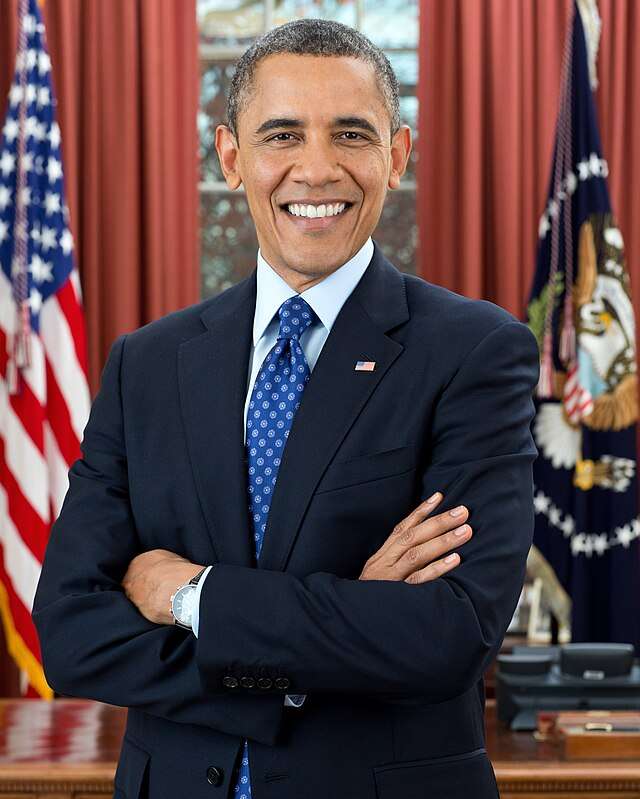
President Obama, himself, was for the Act and stated in 2013: “There aren’t a lot of functioning democracies around the world that work this way, where you can basically have millionaires and billionaires bankrolling whoever they want, however they want, in some cases undisclosed.”
This wasn’t just political inaction. It was compliance—a silent, strategic acceptance of a ruling that ultimately benefited both parties’ access to corporate dollars, at the direct expense of We the People.
The Two-Party System Was Designed to Keep Us Contained
We’re told our vote is our voice. That democracy gives us power. That choosing between Democrat or Republican every few years is how we shape the future.
But the truth is, the American two-party system was never built to represent the people—it was built to contain us.
The idea that Democrats and Republicans are two opposing sides in a battle of good vs. evil is a narrative designed to keep us emotionally invested in a system that serves the same ruling class. While we’re locked in debates over parties, the policies that preserve corporate control rarely change—no matter who’s in power.
Both Parties Protect the Economic System That Keeps Us Powerless
Both Democrats and Republicans operate within the same capitalist framework, as we just discussed—one that prioritizes corporate profit over human well-being. They may disagree on how capitalism should look, but neither party is willing to fundamentally challenge the system itself.
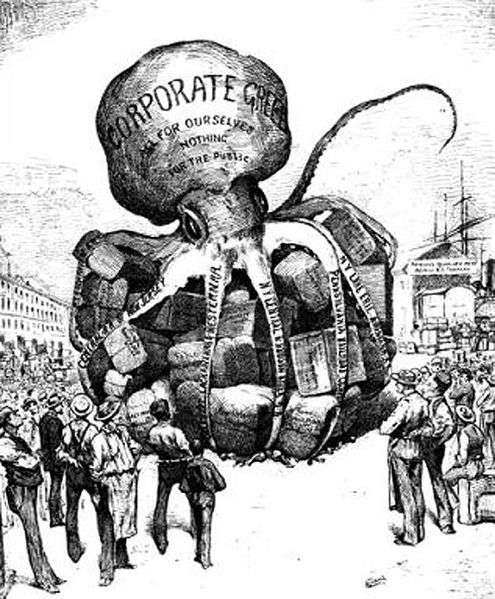
- Wall Street was bailed out by both parties—under George W. Bush in 2008 and Barack Obama in 2009.
- The U.S. continues to spend more on the military than the next ten nations combined, regardless of which party controls Congress.
- Corporate tax cuts have continued or expanded under both Republican and Democratic leadership. Even after the Trump-era Tax Cuts and Jobs Act of 2017, Biden’s administration kept most corporate tax rates untouched.
And this isn’t a coincidence. It’s design.
The Two-Party System Was Never Meant to Be Democratic
Nowhere in the Constitution does it say we must have only two political parties. That’s a modern construction—reinforced by state laws, media gatekeeping, and campaign finance structures that keep outsiders off the ballot and out of the conversation.
- Most states have laws that make third-party ballot access incredibly difficult, requiring tens of thousands more signatures than major parties.
- The Presidential Debate Commission is co-chaired by Democratic and Republican insiders, and excludes third-party candidates unless they poll at 15%—a threshold nearly impossible to meet without corporate money or media exposure.
- First-past-the-post voting, used in almost every U.S. election, ensures that third-party candidates are viewed as “spoilers” rather than viable options. Ranked-choice voting, which could change this, is opposed by both major parties in most states.
Manufactured Culture Wars, Real Structural Agreement
The two parties market themselves through cultural differences—abortion, guns, immigration, education—and those differences do matter. They absolutely do. But when it comes to the distribution of wealth, consolidation of power, and corporate dominance, both parties quietly agree to keep the structure intact, which in turn, affects passing bills regarding the cultural differences mentioned here.
They argue over who gets a seat at the table. But no one questions who owns the table.
We do, my friends. We the People own the damn table!
But Here’s Another Thing They Don’t Want You to Realize
This system can be changed.
It isn’t immovable. It isn’t permanent. And it sure as hell isn’t sacred.
The power to dismantle and rebuild it sits with us.
We the People, are the only ones who fully control the most valuable force in this country: our labor.
When we act together—when we organize across race, class, region, and party lines—we have the ability to stop the machine in its tracks.
The working class isn’t just the backbone of this country. It is the country. Without us, nothing runs. No supply chain moves. No profits are made. No empire stands.
And that’s exactly why the system is designed to keep us divided, distracted, and disempowered—so we never recognize that truth.
But once we do?
Everything becomes possible.
A system built to service corporations can be replaced with one that serves communities.
A government bought by billionaires can be relcaimed by the people who built it.
And a two-party trap can be broken open by a multi-racial, multi-class movement ready to build something real.
That means organizing locally. Running candidates who take no PAC money. Fighting for ranked-choice voting and ballot access. Supporting workers, renters, students, and immigrants who are already leading. And using every tool we have—from mutual aid to direct action—to make sure the people write the next chapter, not the corporations.
No one is coming to save us. But if we organize like we believe we can save each other—we win.
Neoliberal Democrats: The Illusion of Resistance
So why hasn’t it happened yet?
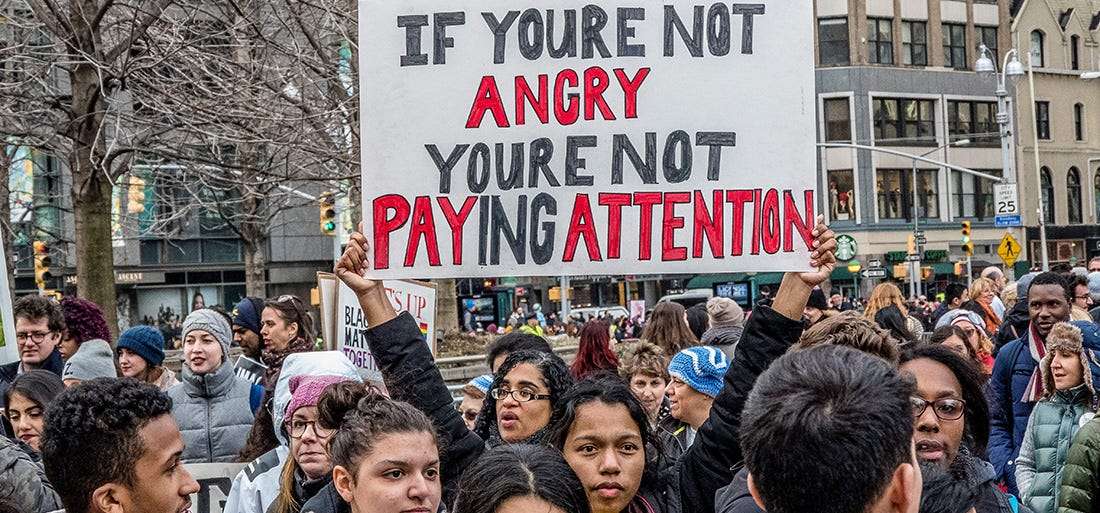
Why, even after record voter turnout, marches, protests, and grassroots campaigns, does nothing fundamentally change?
Because every time the people push for structural change, there’s a faction inside the Democratic Party that steps in to block it.
Remember Kyrsten Sinema and Joe Manchin? Yeah, they aren’t the only two.
Neoliberals don’t use outright denial like the Republicans.
They do it through Delay. Deflection. Dilution.
Neoliberal Democrats present themselves as the reasonable middle, the party of progress—but their voting record often aligns them with the very forces they claim to oppose.

Take President Biden’s words at President Carter’s funeral. He said:
“Everyone, and I mean Everyone, deserves an even shot. Not a guarantee, but just a shot.”
When I watched this eulogy live, my mouth dropped and I said a few choice words out loud, because talk about tone deaf. Biden proudly proclaims on the regular that he’s a capitalist. And that phrase sounds good on paper—but in practice, it’s a blunt dismissal of the systemic barriers that keep poor people and working-class people—and especially people of color—locked out of opportunity. It’s poetic on a dais, but detached from reality.
Let’s be clear: saying people “deserve a shot, not a guarantee” is a refusal to confront deep inequality. It’s a worldview shared by many neoliberal Democrats who maintain the status quo—even when that status quo harms the very communities they insist they represent.
Poor people don’t have an “even shot” in a society built against them.
And for many Americans—especially Black, Brown, Indigenous, and working-class folks—that “shot” might not even exist.
This isn’t cynical or playing the victim—it’s accurate. When a system is rigged, platitudes aren’t enough. You need real power shifts—and that’s where neoliberal Democrats always fall short. Always.
Who Votes With MAGA—and What That Costs Us
Here are real-world examples from the current Congress on how often neoliberal democrats vote with MAGA:
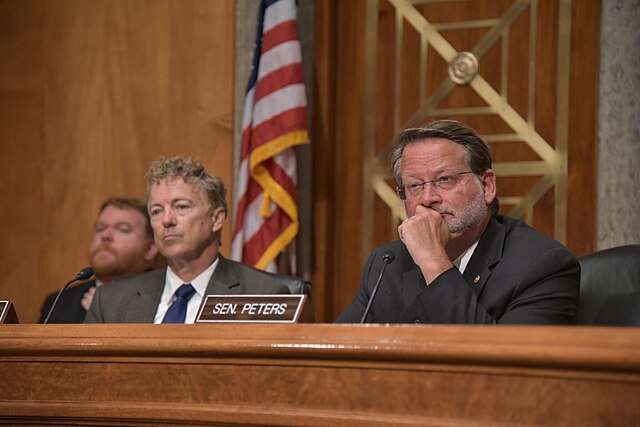
- Jared Golden (ME) — The only Democrat who voted for the GOP stop-gap spending bill in March 2025, helping avert a government shutdown. That vote directly enabled continued funding of military and surveillance budgets over human services. This isn’t “taking care of our own first.”
- Marie Gluesenkamp Perez (WA) —Joined all Republicans to pass the SAVE Act (H.R. 8281), which imposed stricter voter ID requirements. In April 2025, she was one of four Democrats to support the bill—votes that undermine election security and disproportionately harm marginalized voters. We all have a fundamental right to vote in this country, my friends. Regardless of our income level.
- Colin Allred (TX), Jared Golden, Henry Cuellar (TX), Marie Perez, and others — In 2024, fifteen Democrats voted with Republicans on H.R. 9495, authorizing harsh tax penalties on donations to certain NGOs—an expansion of state power that chills civic participation.
- Laken Riley Act (S.5) — Expanded mandatory detention of undocumented immigrants charged with theft, without due process or equal protection under the Constitution (and we all know it’s gone far beyond theft and into kidnapping of innocent people right off the streets):
- Senate passed it 64–35, with 12 Senate Democrats joining Republicans. Including many of our Great Lakes reps. My two democratic senators in Michigan voted for this: Gary Peters and Elissa Slotkin. It was Elissa Slotkin’s first vote as a US Senator.
- House passed it 263–156, with 46 House Democrats voting “yea.” My congresswoman, Kristen McDonald-Rivet voted for this bill. Her first vote as a US Congresswoman.
- “Thank ICE” House Resolution — Expressed gratitude to ICE in a resolution condemning antisemitic violence. The resolution boosted an agency with a documented record of civil rights violations—legitimizing state violence:
- Passed 280–113 in the House; 75 Democrats voted “yea.”
- That’s nearly one-third of the Democratic caucus, including Great Lakes members like Rep. Brendan Boyle, Rep. Emilia Sykes, and several Michigan Democrats. My congresswoman, McDonald-Rivet, voted for this also.
These Democrats didn’t just vote against progressive priorities—they voted with Republicans to strengthen corporate and state control.
And these are just a few examples of too many to count.

The Pattern Is Clear—and It’s Costing Us
These aren’t isolated missteps by the Democrats. They’re part of a pattern.
When it’s time to push for bold reform on wages, healthcare, voting rights, corporate power, neoliberal Democrats often stall or side with the GOP.
That’s how our hopes get diluted into faint policy gestures—while the status quo moves us further to the right.
And it goes beyond specific bills. Let’s look at a few examples.
- Here in my state of Michigan, during the 2024 lame-duck session, Democrats failed to stop billions in corporate subsidies—proving that even in states with progressive majorities, neoliberal logic wins out.
- Wall Street bailouts, opioid pharma protections, massive tax breaks for big business—every major crisis has, again and again, been answered with legislation focused on corporate profits, not working-class relief.
If you’re still waiting for Medicare for All or codified bodily autonomy, even under a Democratic-controlled Congress, don’t hold your breath too long.
So Where Does Real Change Start?
Real change starts with us, not them. This is where we build the “how” into our vision:
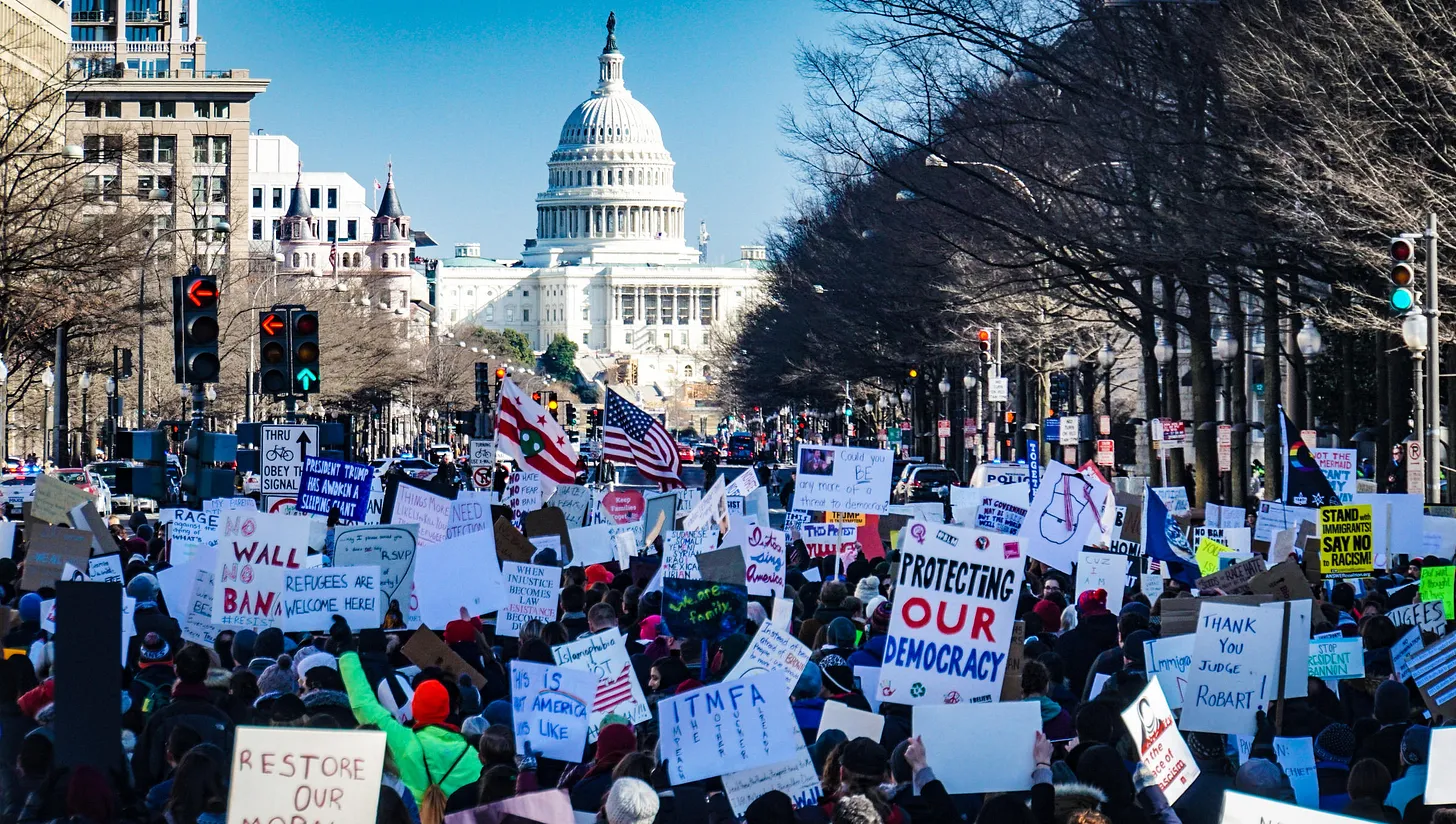
- Track and expose these votes—especially from the Great Lakes region and swing districts—and shine a light on them.
- Primary the neoliberals—not out of hope, but accountability. Show up in primaries with working-class champions who refuse corporate money and fight for our communities. Blue no matter who needs to end. It matters who sits in the seat if we want real progress for the working class.
- Disrupt fundraising pipelines—demand public financing, eliminate PACs and corporate lobbying, and close the revolving door between government and private industry.
- Wield electoral power—in local and down-ballot races, support candidates championing systemic change in favor of the working-class, not comfort and moderation.
- Support bottom-up organizing—unions, tenant movements, mutual aid, and immigrant justice efforts that operate outside party gatekeepers.
- Shatter the containment—push for ranked-choice voting, open primaries, and fair ballot access so third parties and ideas outside corporate control can compete.
- Restructure the entire system—Implement term limits across all branches of government. Require civics exams for legislators to ensure they understand the Constitution and their responsibilities. Mandate regular town halls in every district and state so elected officials are accountable to the people who put them there. And most critically, create enforceable mechanisms for removing rogue legislators and presidents from office—even when Congress itself is complicit. Because as it stands now, when corruption infects every branch, there’s no efficient way out, as we are currently experiencing.
Neoliberal Democrats say they believe in change.
But their votes say otherwise.
And while MAGA Republicans threaten our civil freedoms, neoliberals quietly protect the corporate system that funds them both.
If we want something real—a democracy controlled by working people, not billionaires—we’ll have to go beyond labels and party loyalty.
We’ll need to challenge the system where it starts: at the ballot box, in our neighborhoods, and at the heart of power: capitalism.
Capitalism: The Glue Between the Parties
You can argue about culture, identity, and rhetoric all day—but when it comes to the system that really runs this country, Democrats and Republicans are glued together by one thing: capitalism.
Not capitalism in the abstract.
Not small-business, mom-and-pop, bootstrap capitalism.
But corporate, consolidated, exploitative capitalism—the kind that extracts everything from workers, communities, and the planet, and funnels the profits straight to the top.
And that’s where both parties quietly agree to play by the same rules. And it’s been fed to us from birth that capitalism is king and all other progressive systems of government are oppressive, even though the New Deal proved otherwise and built a thriving middle class in this country. But that topic is for another time.
Follow the Money—It Doesn’t Lie
Wall Street donates heavily to both parties. In 2020, financial firms gave over $74 million to Democrats and $67 million to Republicans. The same banks hedge their bets with both sides, knowing the core system stays untouched either way.
Under Obama, banks were bailed out after the 2008 crash with no jail time, no breakup, and no structural reform.
Under Trump, the tax code was rewritten to favor the ultra-wealthy—then mostly left in place under Biden, despite campaign promises.
Even now, corporate subsidies flow under both administrations, whether it’s oil and gas, tech monopolies, defense contractors, or pharmaceutical giants.
At every level—energy, healthcare, housing, agriculture—the rules are written to protect profit over people.
What Neither Party Will Touch
Corporate monopolies? They’re too busy fundraising off them.

Universal healthcare? Too “politically difficult,” despite overwhelming public support and economic studies from both sides that show we’d save trillions of dollars under a single payer system.
Living wages, housing as a right, or public banking? Off the table—too threatening to corporate interests.
While Democrats may back civil rights and social protections, they consistently stop short of redistributing wealth or fundamentally restructuring power. And Republicans? They don’t even pretend to try.
That’s how the two-party system survives: It gives you the illusion of choice on cultural issues, while ensuring that economic power remains untouched.
That’s Why You Feel Stuck
It’s not your imagination.
If you feel like no matter who you vote for, your rent goes up, your wages stay flat, your healthcare costs rise, and billionaires keep winning—that’s because the economic system that makes all that happen has bipartisan protection.
This is the part that’s rigged.
And this is the part they won’t change—unless we force them to.
Still, it’s not the same machine on both sides—not entirely. While both parties serve capital, only one is actively using the power of government to strip away human rights. And that distinction, as bitter as it may be, still matters—especially to those whose bodies, identities, and freedoms are on the line.
Where the Parties Actually Diverge—and Why That Still Matters
It’s easy—and as stated here, accurate—to say both parties are captured by corporate power. That they prioritize donors, protect capital, and distract us with culture wars while avoiding systemic economic change. But if we’re going to tell the truth, we have to tell the whole truth.
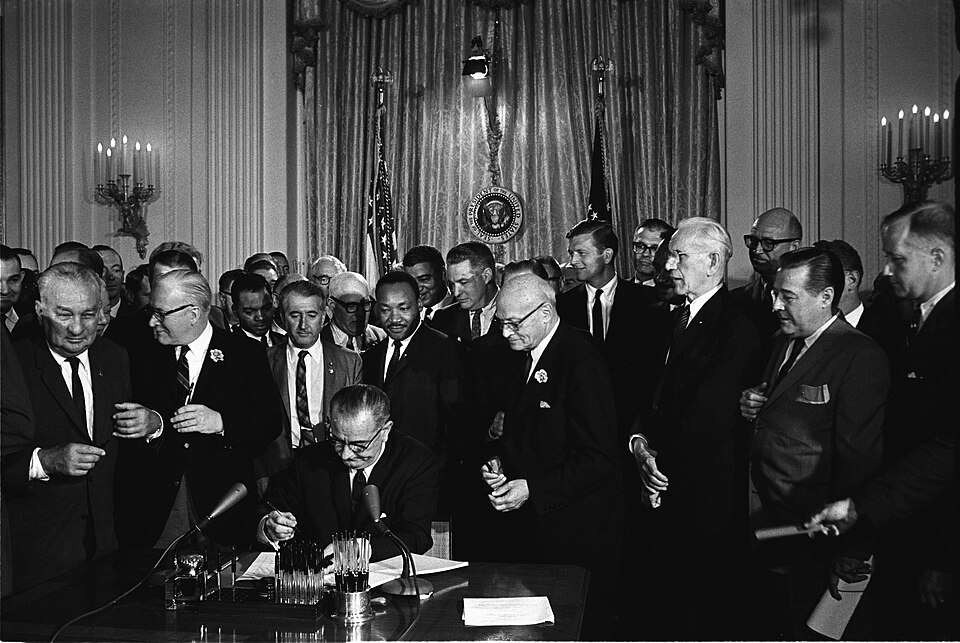
Because while both parties protect the status quo, they don’t wield power the same way.
When it comes to individual rights, bodily autonomy, and basic civil liberties, the differences are real. And in many cases, they are the difference between life and death.
On Social Policy and Civil Rights, the Divide Is Stark
Democrats may frustrate us with delay and moderation—but Republicans have embraced open authoritarianism in how they legislate control.
| Issue | Democrats | Republicans |
| Abortion | Support legal access and codification of Roe | Overturn Roe, push for national bans, criminalize providers and pregnant people |
| LGBTQ+ Rights | Support marriage equality, gender-affirming care | Ban gender care, target trans youth, attack queer culture |
| Voting Rights | Expand access—mail-in ballots, early voting | Suppress votes—ID laws, purges, gerrymandering |
| Education | Invest in public schools, promote inclusive curriculum | Censor curriculum, ban books, dismantle DEI efforts |
| Environment | Fund green energy, acknowledge climate science | Expand fossil fuels, reject environmental regulation |
Yes—neoliberal Democrats protect corporate structures. Yes, they vote with Republicans far too often. But they are not the ones banning reproductive healthcare, stripping civil rights from queer people, or criminalizing teachers and librarians for telling the truth.
Republicans are.
One Party Is Complicit. The Other Is Actively Dangerous.
That doesn’t excuse the Democrats. Their failure to fight for working people, their refusal to challenge corporate power, and their constant retreat into incrementalism are all part of the problem.
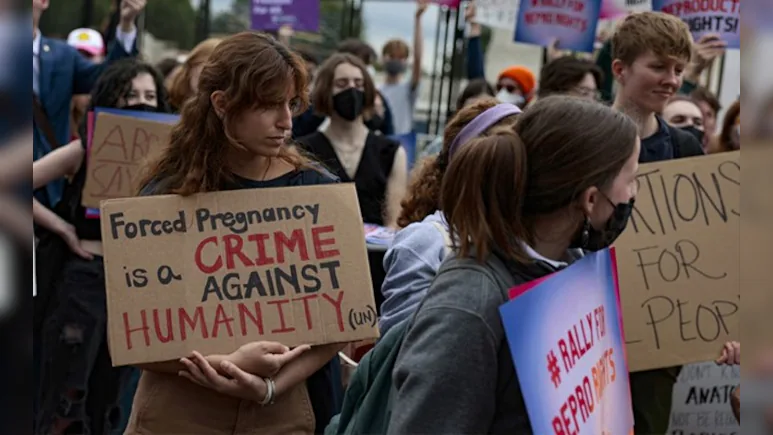
But equating the two parties across the board flattens reality.
Because when a pregnant woman is denied life-saving abortion care…
When a trans teen loses access to basic healthcare…
When a teacher is fired for speaking honest history…
Those are not bipartisan failures.
They are the result of intentional, extremist policy by a GOP that has been overtaken by theocratic, nationalist politics.
Even if Democrats often enable the system, they aren’t the ones designing these specific attacks.
That’s Where People Get Confused
Both parties serve the wealthy. Both protect capitalism.
But only one is actively weaponizing the law to roll back civil rights and rewrite the meaning of freedom in this country.
So if you’re working class, poor, or marginalized—you feel squeezed from all sides. You’re told to vote blue, even when blue feels weak and compromised. But voting red means voting for your own erasure.
This isn’t about saying one party is “good.” It’s about being honest about what we’re actually up against—and where we can still pressure, organize, and win.
And that brings us full circle.
Because once we recognize that both parties serve capital—one with silence, the other with violence—we stop playing their game. We stop debating which flavor of control we prefer and start reclaiming the power we were taught to forget. The real battle isn’t left vs. right. It’s top vs. bottom. And the only path forward is to remember who makes this country run.
We do.
Working people. Students. Parents. Nurses. Teachers. Farmers. Dreamers. Fighters.
When we organize across lines of division, when we withhold our labor, our money, our votes, and our compliance—we remind the system exactly who holds the real power.
Because we are not passive beneficiaries of progress. We are the inheritors of a fight—and now, we lead it.
Let’s build something better. Together. For real this time.








